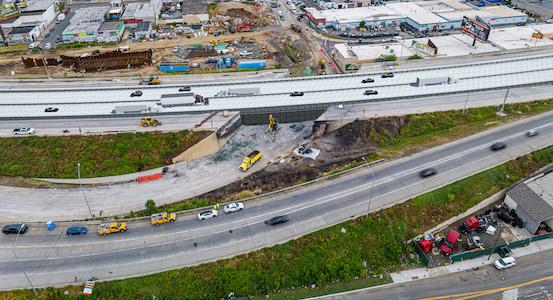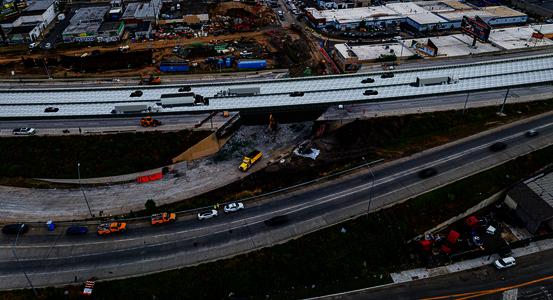
Infrastructure Patterns
June 8, 2023
Highway Express
June 23, 2023Working Around & Through at the Same Time

I-95 Thrulines
When a section of I-95 in northeast Philadelphia collapsed on June 11th, the result of a tanker truck catching fire, the focus was first on rescue.
That was followed quickly by plans to set into motion a way to get traffic flowing.
All accidents hurt, physically and economically. This particular accident was magnified, due to I-95 serving as a major artery for the eastern seaboard, from Miami to Maine.
Some 14,000 trucks cross that section of highway every day. The Port of Philadelphia, four miles south of the damage, sends about 1,500 reefer trucks out daily, many of them headed north to New York.
As Rebecca Oyler, CEO of the Pennsylvania Motor Truck Association, told Transport Topics, “Trucks coming out of PhilaPort normally have direct access to I-95, but now headed north they have to navigate back streets through the city, many of which were, of course, not designed to accommodate trucks.”
The initial alternate route involved a 43-mile detour.
How to work around and through a heavily-traveled highway, both in and connecting one of the most densely populated parts of the country?
Plan smartly, and work as quickly as is safely possible.
The damaged section of I-95 has already been demolished, ahead of schedule. The City of Philadelphia maintains an update page of closures and alternate routes (see HERE).
And plans are being solidified for construction of a temporary road: a “round-the-clock repair initiative will involve backfilling and paving the gap in the roadway to return traffic to the site while a permanent bridge is built. Once the permanent structure is complete, the temporary one will be demolished and the backfill used in other projects.”
Projected time to completion of the permanent bridge is “months.”
One way or another, it’s all connected: highways, communities, distribution, transportation. As NATCO VP Cori Eckley says, “They call it a supply chain for a reason.”

